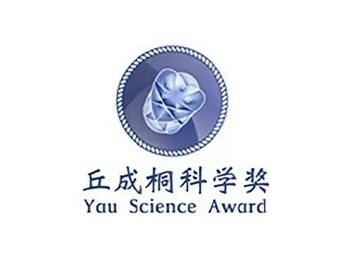Mechanical Engineering Projects for High School Students
Harvard University has published admission guidelines highlighting over 20 personal traits they particularly focus on during the student application review process. Two of these aspects are highly relevant to personalized projects:
1. Growth and Potential: Does the student demonstrate maximum effort and potential in their academic achievements? Do they have enough drive to accomplish more? Have they planned and managed their time effectively?
2. Academic and Interest Engagement: Is the student curious about academics, extracurricular activities, and personal interests? What have they learned from their interests? What have they invested, and what results have they achieved? Success or failure?
Therefore, personalized research is crucial for high school students applying to college. Below are 21 mechanical engineering topics recommended by Embark mentors that may inspire you.
21 Mechanical Engineering Projects for High School Students
1. Next-Generation Intelligent Digital Portable Ocular Medical Assistance Device
Vision issues are a significant problem among teenagers today, leading to increased use of eye drops. This project aims to design a digital eye dropper using inkjet printing principles, which can precisely control the dosage, avoid wastage, and minimize leakage. It will also miniaturize the drops to reduce damage to the cornea.
2. Thermal Management of Electronic Components Based on Computational Fluid Dynamics
This project focuses on optimizing the thermal management of electronic components by designing effective flow field structures to address failure challenges in the electronics industry. It is suitable for students interested in mathematics, physics, mechanical engineering, fluid dynamics, heat transfer, electronic engineering, and computer applications.
3. Automotive Aerodynamics Research and Optimization Design
This project starts with an overview of car body shape design concepts, classifications, methods, and future directions. It involves creating a 3D computational model of the car, setting up computational fluid dynamics (CFD) grids, and simulating calculations to identify and optimize parameters affecting automotive aerodynamics.
4. Wind Load Interference Effects in High-Rise and Low-Rise Building Clusters
This project uses CFD analysis to study wind load interference effects on low-rise buildings in different configurations. It involves 3D modeling of building clusters, CFD grid setup, and simulation to analyze the impact of high-rise buildings on surrounding structures' wind loads.
5. Multi-Robot Coordination and Control
This project explores the coordination and control of multiple robot systems, including autonomous drone and vehicle formations. It includes simulating multi-robot formations and studying intelligent control methods for scenarios such as communication interruptions and obstacle avoidance.
6. Optimization of Aircraft Wing Simplified Models Using Finite Element Method and Machine Learning
This project involves reducing the dimensionality of aircraft wings in 3D space to create a simplified 2D model, reducing computational costs. It incorporates machine learning algorithms to develop surrogate models for rapid predictions.
7. Topology Optimization Design of Flexible Grippers for Irregular Objects
This project focuses on using topology optimization and finite element models to design flexible grippers with optimized sizes and shapes. The design models can be manufactured using 3D printing, with experimental tests to evaluate performance.
8. Intelligent Home Object Finder Robot
This research aims to develop a practical and user-friendly home object finder robot to save time and effort, providing a convenient solution for locating misplaced items and improving daily convenience.
9. Computer-Aided Design and Finite Element Analysis Based on Abaqus
Abaqus is a powerful finite element software for engineering simulations, ranging from simple linear analysis to complex nonlinear problems. This project explores the application of Abaqus in mechanical design and computer-aided design.
10. Component Design and Manufacturing Based on 3D Printing
This project investigates the design and manufacturing of components using 3D printing, focusing on plastic and resin printing due to the high cost of metal printing equipment.
11. Intelligent Robot Path Planning Using Deep Reinforcement Learning
This project involves designing algorithms for the flexible movement of intelligent robots in various environments to assist with repetitive or dangerous tasks using deep reinforcement learning.
12. Feasibility Study of Metal-Rubber Vibration Isolators as Engine Mounts
This project aims to design a new type of engine mount using metal-rubber materials, creating a numerical model of the isolator and plotting design curves for different excitation frequencies.
13. Reliability Modeling of Complex Systems
Reliability engineering plays a crucial role in various fields, evolving from electronics to complex mechanical systems. This project applies reliability engineering theories and methods to address complex system reliability issues.
14. Multi-Robot Systems
Inspired by animated robots with magnetic capabilities or transformable robots, this project involves mathematical modeling of real-world problems related to robot algorithms, suitable for students interested in robotics.
15. Control and Planning of Flying Robots
Flying robots, such as quadcopters, are important in many applications. This project introduces robotics fundamentals and programming for flying robots, applying feedback control and exploring various control strategies.
16. Fuel Cell and Battery Hybrid Vehicles
This project offers an opportunity for students interested in mechanical or chemical engineering and vehicle development to design a next-generation vehicle. Students will become familiar with essential vehicle components and fuel cell concepts, ultimately designing a technically and economically feasible hybrid vehicle.
17. Improvement of Exhaust Pipe Fatigue Life
This project involves analyzing the fatigue life of exhaust pipes, studying the relationship between simplified structural vibrations and maximum stress, and designing a vibration damper capable of withstanding high temperatures.
18. Tennis Racket Vibration Dampers
Research shows that tennis racket vibrations can impact athletes' muscle fatigue. This project aims to design an innovative, lightweight vibration damper for tennis rackets, studying vibration behavior through simulations or experiments.
19. Future Silent Flight: Advanced Acoustic Metamaterials in Aerospace
With advancements in aerospace technology, managing and controlling acoustic environments has become crucial. This research aims to develop and study high-performance acoustic metamaterials for aerospace applications, reducing noise and enhancing environmental adaptability and comfort.
20. Next-Generation Intelligent Digital Portable Ocular Medical Assistance Device
Vision has become a major problem for today's teenagers, and the use of eye drops has become more and more frequent. This project intends to use the principle of inkjet printing to design a digital eye dropper that can accurately control the amount of medication to avoid waste and outflow. At the same time, the drug droplets can also be miniaturized to reduce damage to the cornea.
21. Path Planning Using Reinforcement Learning
Path planning is a key component of robotics and autonomous systems, determining the most efficient or optimal route from start to destination while avoiding obstacles. Reinforcement learning provides a framework for decision-making in uncertain environments, making it suitable for dynamic path planning.
How High School Students Start Their Research Journey?
Research involves using scientific methods to investigate problems, which includes defining research questions and finding answers through scientific approaches.
High school students, with some level of self-learning ability, might lack systematic research training and thinking. Even with well-researched problems, determining the novelty and the required time and resources can be challenging.
With guidance from mentors, extensive literature reading, and self-learning, students can identify research problems within their capability that are innovative. This approach makes the research process more effective.
During the research, mentors will provide continuous and long-term communication, which is also a process for students to enhance their overall abilities.
While research conclusions are not always certain and require time for validation, good mentors can assess the feasibility and innovativeness of the research topic from the beginning.
How to choose a research mentor?
A good mentor should:
1. Guide students in thinking and developing self-exploration and learning abilities.
2. Improve efficiency by breaking down tasks and supervising completion.
3. Help filter information and save literature research time.
4. Teach research methods and help students develop systematic thinking.
5. Assess the feasibility of topics to avoid detours.
Embark was founded in 2016 and is an educational institution focusing on customized scientific research training for teenagers. The core team members are master's and doctoral graduates from prestigious American universities. There are currently over 3,000 mentors from world-renowned schools such as the Ivy League, MIT, California Institute of Technology, Johns Hopkins University, Carnegie Mellon University, and others.
Embark provide one-on-one academic research guidance, customizing research topics based on students' interests. Embark help them systematically develop research skills, establish correct research thinking frameworks, connect research to real-world applications, appreciate the charm of research, and improve their problem-solving abilities, thereby supporting their college applications.
For more information, please visit the Embark Exploration Program. If you have any questions or need further information, feel free to contact us. We will be happy to assist and discuss possible collaboration opportunities.



